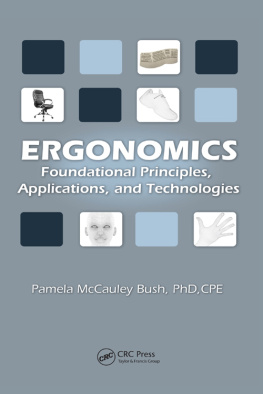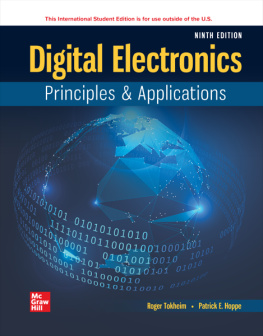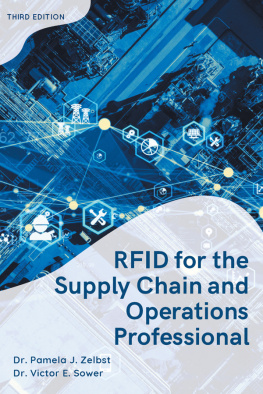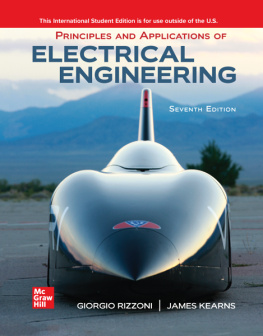Pamela McCauley Bush - ERGONOMICS: Foundational Principles, Applications, and Technologies
Here you can read online Pamela McCauley Bush - ERGONOMICS: Foundational Principles, Applications, and Technologies full text of the book (entire story) in english for free. Download pdf and epub, get meaning, cover and reviews about this ebook. year: 2011, publisher: Taylor & Francis Group, genre: Romance novel. Description of the work, (preface) as well as reviews are available. Best literature library LitArk.com created for fans of good reading and offers a wide selection of genres:
Romance novel
Science fiction
Adventure
Detective
Science
History
Home and family
Prose
Art
Politics
Computer
Non-fiction
Religion
Business
Children
Humor
Choose a favorite category and find really read worthwhile books. Enjoy immersion in the world of imagination, feel the emotions of the characters or learn something new for yourself, make an fascinating discovery.
- Book:ERGONOMICS: Foundational Principles, Applications, and Technologies
- Author:
- Publisher:Taylor & Francis Group
- Genre:
- Year:2011
- Rating:5 / 5
- Favourites:Add to favourites
- Your mark:
- 100
- 1
- 2
- 3
- 4
- 5
ERGONOMICS: Foundational Principles, Applications, and Technologies: summary, description and annotation
We offer to read an annotation, description, summary or preface (depends on what the author of the book "ERGONOMICS: Foundational Principles, Applications, and Technologies" wrote himself). If you haven't found the necessary information about the book — write in the comments, we will try to find it.
ERGONOMICS: Foundational Principles, Applications, and Technologies — read online for free the complete book (whole text) full work
Below is the text of the book, divided by pages. System saving the place of the last page read, allows you to conveniently read the book "ERGONOMICS: Foundational Principles, Applications, and Technologies" online for free, without having to search again every time where you left off. Put a bookmark, and you can go to the page where you finished reading at any time.
Font size:
Interval:
Bookmark:

Ergonomics Design and Management:
Theory and Applications
Series Editor
Waldemar Karwowski
Industrial Engineering and Management Systems
University of Central Florida (UCF) Orlando, Florida
Ergonomics: Foundational Principles, Applications, and Technologies
Pamela McCauley Bush
Aircraft Interior Comfort and Design
Peter Vink and Klaus Brauer
Ergonomics and Psychology: Developments in Theory and Practice
Olexiy Ya Chebykin, Gregory Z. Bedny, and Waldemar Karwowski
Ergonomics in Developing Regions: Needs and Applications
Patricia A. Scott
Handbook of Human Factors in Consumer Product Design, 2 vol. set
Waldemar Karwowski, Marcelo M. Soares, and Neville A. Stanton
Volume I: Methods and Techniques
Volume II: Uses and Applications
HumanComputer Interaction and Operators Performance: Optimizing Work Design with Activity Theory
Gregory Z. Bedny and Waldemar Karwowski
Trust Management in Virtual Organizations: A Human Factors Perspective
Wiesaw M. Grudzewski, Irena K. Hejduk, Anna Sankowska, and Monika Wantuchowic
Knowledge Service Engineering Handbook
Jussi Kantola and Waldemar Karwowski
Manual Lifting: A Guide to the Study of Simple and Complex Lifting Tasks
Daniela Colombiani, Enrico Ochipinti, Enrique Alvarez-Casado, and Thomas R. Waters
Neuroadaptive Systems: Theory and Applications
Magalena Fafrowicz, Tadeusz Marek, Waldemar Karwowski, and Dylan Schmorrow
Organizational Resource Management: Theories, Methodologies, and Applications
Jussi Kantola
ERGONOMICS
Foundational Principles,
Applications, and Technologies
Pamela McCauley Bush, PhD,CPE

CRC Press
Taylor & Francis Group
6000 Broken Sound Parkway NW, Suite 300
Boca Raton, FL 33487-2742
2011 by Taylor & Francis Group, LLC
CRC Press is an imprint of Taylor & Francis Group, an Informa business
No claim to original U.S. Government works
Version Date: 20120523
International Standard Book Number-13: 978-1-4398-9784-3 (eBook - ePub)
This book contains information obtained from authentic and highly regarded sources. Reasonable efforts have been made to publish reliable data and information, but the author and publisher cannot assume responsibility for the validity of all materials or the consequences of their use. The authors and publishers have attempted to trace the copyright holders of all material reproduced in this publication and apologize to copyright holders if permission to publish in this form has not been obtained. If any copyright material has not been acknowledged please write and let us know so we may rectify in any future reprint.
Except as permitted under U.S. Copyright Law, no part of this book may be reprinted, reproduced, transmitted, or utilized in any form by any electronic, mechanical, or other means, now known or hereafter invented, including photocopying, microfilming, and recording, or in any information storage or retrieval system, without written permission from the publishers.
For permission to photocopy or use material electronically from this work, please access www.copyright.com (http://www.copyright.com/) or contact the Copyright Clearance Center, Inc. (CCC), 222 Rosewood Drive, Danvers, MA 01923, 978-750-8400. CCC is a not-for-profit organization that provides licenses and registration for a variety of users. For organizations that have been granted a photocopy license by the CCC, a separate system of payment has been arranged.
Trademark Notice: Product or corporate names may be trademarks or registered trademarks, and are used only for identification and explanation without intent to infringe.
Visit the Taylor & Francis Web site at
http://www.taylorandfrancis.com
and the CRC Press Web site at
http://www.crcpress.com
This book is dedicated to my parents, Maurice Sr. and LaFrance
McCauley. Daddy, thank you for making me take Algebra in
the 7th grade, which began my love for math, science, and
ultimately engineering. Mom, thanks for your eternal faith
in me, constant encouragement, and steadfast optimism.


The motivation for this book is a result of almost two decades of teaching ergonomics and human factors courses. In my interaction with students, it was apparent to me that an introductory text that focuses on basic ergonomic principles from both a research and application perspective could be very useful. This book is written to be used at the undergraduate and graduate levels as well as by professionals in industry requiring a first course in ergonomics. It is designed to be used as that introductory text and accompanied with hands-on laboratory activities to complement classroom instruction. The use of case studies is designed to demonstrate application of the ergonomic knowledge. The book covers the foundational principles and major topics in the field of physical ergonomics. Upon completion of a course using this book, the student will be prepared to apply the ergonomic knowledge in industry or continue to higher levels of study in the field.
The content covered in the book includes the following:
: Introduction to ergonomics, history of the field, and associated legislative agencies.
: Overview of the systems body; this will serve as a refresher of select material learned in anatomy, biology, and physiology courses.
: Overview of human sensory capabilities as well as measurement of environmental factors.
: Introduction to muscular work and innervations of the muscular system.
: Introduction to the study of human body dimensions (or anthropometry).
: Student application of ergonomic principles to the design of workplaces and hand tools.
: Introduction to work-related musculoskeletal disorders, including history of disorders, causal factors, and mitigation strategies.
: Introduction to work physiology with a discussion of the principles of heavy work, and evaluating physical workload and fatigue.
: Overview of cognitive ergonomics and information processing as well as an explanation of principles for the design of controls and displays.
: Introduction to product liability and the impact of ergonomics in design on the consumer.
DESCRIPTION OF LABORATORY MANUAL
The laboratory manual contains multiple laboratory and application assignments to give students hands-on experience in applying ergonomic material taught in the classroom lectures. The manual has labs for each of the primary topics covered in the course as well as guidelines on how students are to conduct the laboratories and prepare lab report. Numerous tables, equations and examples are provided in the lab manual to facilitate student understanding of the material. The use of the lab manual supports the instructor by providing tailored exercises for students to perform that are directly aligned with the textbook material. Assignments are also provided for students taking the course via distance learning or remote resources. http://www.crcpress.com/product/isbn/9781439804452
Font size:
Interval:
Bookmark:
Similar books «ERGONOMICS: Foundational Principles, Applications, and Technologies»
Look at similar books to ERGONOMICS: Foundational Principles, Applications, and Technologies. We have selected literature similar in name and meaning in the hope of providing readers with more options to find new, interesting, not yet read works.
Discussion, reviews of the book ERGONOMICS: Foundational Principles, Applications, and Technologies and just readers' own opinions. Leave your comments, write what you think about the work, its meaning or the main characters. Specify what exactly you liked and what you didn't like, and why you think so.












